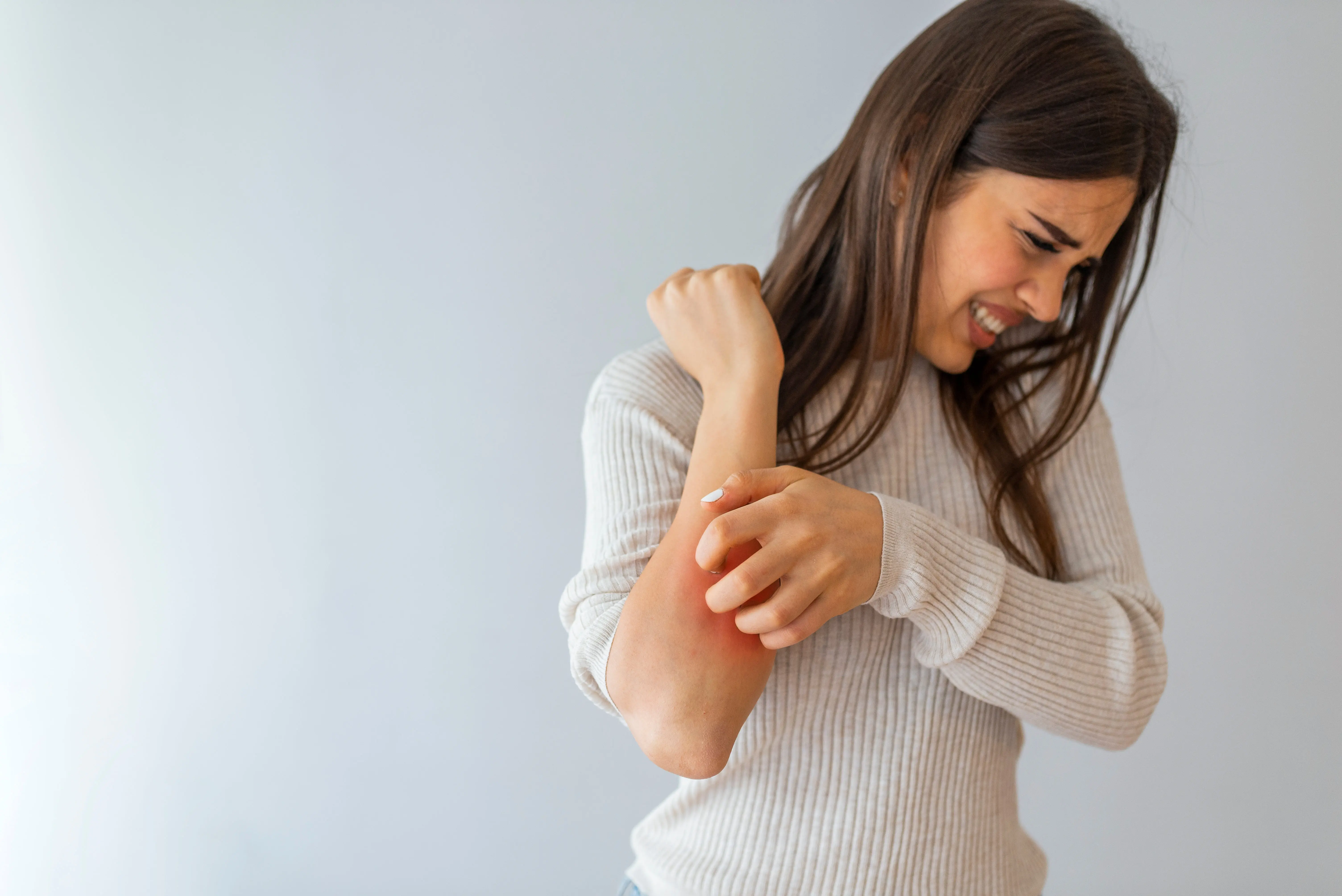
© Adobe Stock
October 28, 2025
Marianne Waldenfels
- Health
Psoriasis: Origin, Treatment, and New Therapies
What therapies and treatment options are available for psoriasis? And when should they be used? A check.

© Adobe Stock
October 28, 2025
Marianne Waldenfels
What therapies and treatment options are available for psoriasis? And when should they be used? A check.
Psoriasis, known in German as Schuppenflechte, is a chronic inflammatory skin disease that affects about 2-3% of the global population, approximately 2 to 2.5 million people in Germany. The disease typically presents with well-defined, red skin areas covered with silvery-white scales. These plaques result from accelerated cell division in the epidermis, where skin cells renew about ten times faster than in healthy individuals.
Psoriasis is not just a skin disease but is now understood as a systemic inflammatory condition that can also affect other organ systems. Psoriatic arthritis is particularly significant, an inflammatory joint disease that occurs in about 30% of psoriasis patients.
The development of psoriasis is multifactorial and not yet fully understood. It is now known to be an autoimmune disease where the immune system mistakenly attacks the body's own skin cells.
Genetic predisposition plays a central role. If one parent is affected, the risk of disease for children is about 15%, with both parents, it is even 50-75%. Scientists have now identified over 60 gene variants associated with an increased risk of psoriasis, with the HLA-Cw6 gene variant showing the strongest connection.
Immunological mechanisms
In psoriasis, there is a dysregulation of the innate and adaptive immune systems. T-cells migrate into the skin and release inflammatory messengers, particularly the cytokines TNF-alpha, IL-17, and IL-23. These signaling molecules trigger an inflammatory cascade that leads to excessive proliferation of skin cells.
Various triggers can provoke a psoriasis flare in genetically predisposed individuals:
The treatment of psoriasis is stage-appropriate and depends on the severity of the disease, which is measured by the PASI (Psoriasis Area and Severity Index).
For mild forms with limited skin involvement, externally applied preparations are used:
Corticosteroids: Anti-inflammatory ointments and creams in various strengths
Vitamin D3 analogs: Such as calcipotriol, which normalize cell division
Combination preparations: Combination of cortisone and vitamin D3 for synergistic effects
Calcineurin inhibitors: Tacrolimus or pimecrolimus, especially for sensitive skin areas
Phototherapy (moderate psoriasis)
Light therapy utilizes the anti-inflammatory effect of UV radiation:
Narrowband UVB therapy: Considered the standard with good efficacy and safety
PUVA therapy: Combination of psoralen (photosensitizing agent) and UVA irradiation
Bath-PUVA: Especially gentle variant with psoralen bathwater
In cases of extensive involvement or insufficient response to local therapies, internally acting medications are used:
The last 15 years have brought a therapeutic revolution in the treatment of psoriasis. Biologics are biotechnologically produced antibodies that specifically target the immune system.
The first biologics blocked the inflammatory messenger TNF-alpha:
Etanercept, Infliximab, Adalimumab
Good efficacy with 50-75% skin improvement in many patients
IL-12/23 inhibitors
Ustekinumab blocks interleukins 12 and 23 and allows for longer therapy intervals (every 12 weeks after saturation).
Targeted blockade of interleukin-17 has revolutionized therapy:
These medications achieve a 75% improvement (PASI 75) in 70-90% of patients and even an almost complete healing (PASI 90) in 40-70%.
The latest biologics specifically target IL-23:
Advantages of these substances are the very long action intervals (an injection every 8-12 weeks) and the favorable side effect profile.
Deucravacitinib has been approved in the USA since 2022 and inhibits tyrosine kinase 2 (TYK2). As a tablet, it offers an oral alternative to injectable biologics and shows promising efficacy with good tolerability.
Research is working on further innovations:
In psoriasis, almost complete symptom freedom can now be achieved through modern therapies. The development of biologics has not only dramatically improved patients' quality of life but has also deepened the understanding of the immunological disease mechanisms.
Individual therapy planning by experienced dermatologists remains important, as each patient responds differently to treatments. Continuous monitoring and adjustment of therapy are crucial for long-term success. With the therapies available today and those in development, there is justified hope that psoriasis will be well controllable for most patients in the future.